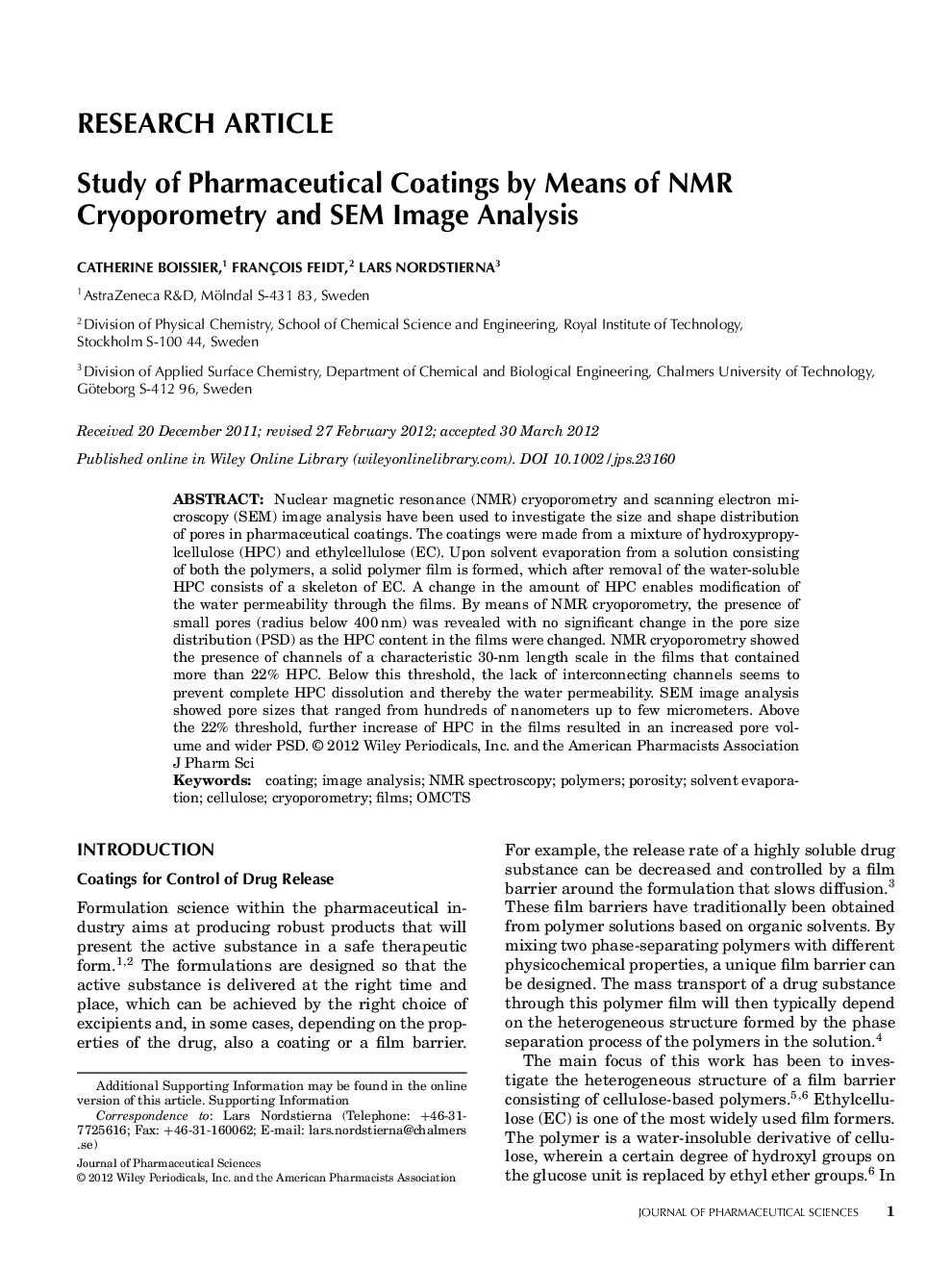| Article ID | Journal | Published Year | Pages | File Type |
|---|---|---|---|---|
| 2485075 | Journal of Pharmaceutical Sciences | 2012 | 11 Pages |
Abstract
Nuclear magnetic resonance (NMR) cryoporometry and scanning electron microscopy (SEM) image analysis have been used to investigate the size and shape distribution of pores in pharmaceutical coatings. The coatings were made from a mixture of hydroxypropylcellulose (HPC) and ethylcellulose (EC). Upon solvent evaporation from a solution consisting of both the polymers, a solid polymer film is formed, which after removal of the water-soluble HPC consists of a skeleton of EC. A change in the amount of HPC enables modification of the water permeability through the films. By means of NMR cryoporometry, the presence of small pores (radius below 400Â nm) was revealed with no significant change in the pore size distribution (PSD) as the HPC content in the films were changed. NMR cryoporometry showed the presence of channels of a characteristic 30-nm length scale in the films that contained more than 22% HPC. Below this threshold, the lack of interconnecting channels seems to prevent complete HPC dissolution and thereby the water permeability. SEM image analysis showed pore sizes that ranged from hundreds of nanometers up to few micrometers. Above the 22% threshold, further increase of HPC in the films resulted in an increased pore volume and wider PSD. © 2012 Wiley Periodicals, Inc. and the American Pharmacists Association.
Keywords
Related Topics
Health Sciences
Pharmacology, Toxicology and Pharmaceutical Science
Drug Discovery
Authors
Catherine Boissier, François Feidt, Lars Nordstierna,
